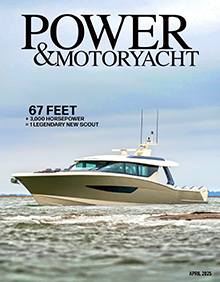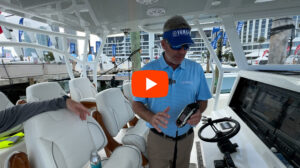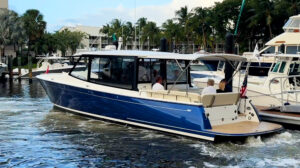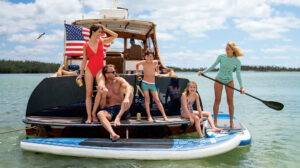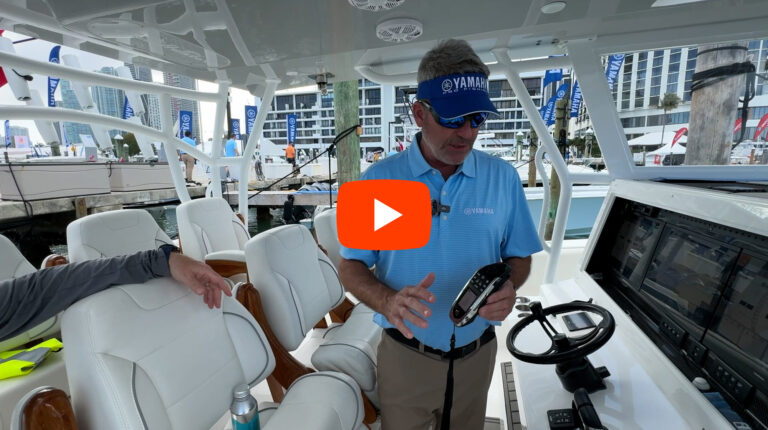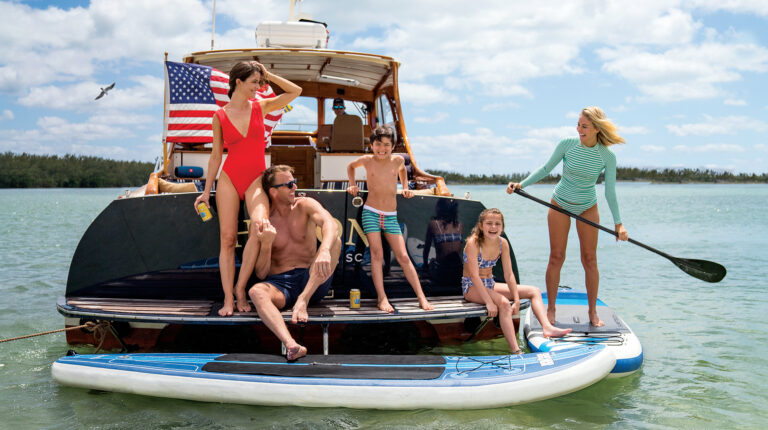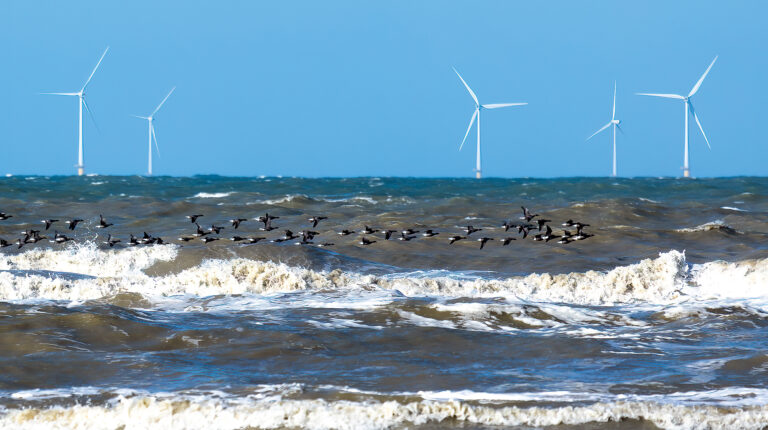Think Big
A man’s home screen is his castle. Consider putting the power
of a superyacht system on your boat, no matter her size.

The Azimut 105 Amanecer puts control of all the boat’s systems into a compact helm
Any skipper with two feet on the bridgedeck needs to know the same data, no matter the boat’s LOA. Sure, a bigger boat will have more systems on which to check (think multiple bilge pumps, watermakers, tender davits), but the navigation data, radar, and depth are all similar. And to that point, all electronics we carry on board have trickled down from larger yachts, which in turn sourced their gear from military and commercial vessels.
The upshot is that regardless of the size of the boat you have—whether it’s an 80-foot motoryacht, a 50-foot trawler, a 40-foot express cruiser, or a 28-foot walkaround—all of your electronics can have the same functionality as those on today’s superyachts.
Just ask Jay Levitt, who did a comprehensive refit of his 2009 Azimut 105 Amanecer. “There’s not a single piece of legacy equipment,” he says. “Essentially our goal in the refit was to upgrade everything. We ended up with the Simrad system because our installer at Honor Marine recommended it, and it fit with the aesthetic. We researched different brands, and the consensus we kept getting was to use Simrad for most of the suite.” The helm on Amanecer has a pair of Simrad multifunction displays (www.simrad-yachting.com) flanked by two Hatteland screens (www.hatteland-display.com). One of these monitors is linked directly to a security-camera system, while the other is dedicated to the FLIR thermal-imaging camera (www.flir.com).
Consider the simplicity of Amanecer’s operating system, and how it lends itself to a clean layout: “We wanted a very sleek, all-glass pilothouse,” Levitt says. “The touchscreens are fantastic, and give us the ability to integrate the autopilot, radar, navigation, and engine data. And our ability to customize screens—if you can think of a combination you want, you can basically do it.”

Amanecer’s 32-foot Intrepid tender also puts control of all the boat’s systems into a compact helm
Levitt also made sure the captain could keep an eye on the system on his iPad from anywhere on board through GoFree (www.gofreemarine.com), a sister brand to Simrad under the Navico corporate umbrella, that provides wireless solutions. “GoFree gave our captain the ability to let the crew manage watches easily,” Levitt says. “He can check up on what’s happening on the charts and on the bridge.”
That’s a powerful system, and one that’s up to the task of helping manage an Azimut 105. But if customizable split screens give the functionality and data that boaters want, the idea works the same whether you’re looking at a three-to-five-screen helm or one with room for just one or two multifunction displays (like many boaters have).
Case in point: Amanecer is not the only boat that Levitt had in mind during the refit. “We wanted complete consistency between electronics on the big boat and the tender, which is a new, 32-foot Intrepid,” he says. “The tender has all of the same electronics the big boat has. We didn’t want the crew to have to learn two different user interfaces.”
A similar setup is hard at work on the Horizon E88 Waddle We Do, which has a 14-foot tender with a Garmin plotter (www.garmin.com) and a Fusion stereo (www.fusionentertainment.com). Simplicity in the user interface has long been a priority with Garmin. Waddle We Do features a three-display array of Garmin GPSMAP 8215s. Each of the devices is easy to use on its own, but they work best together.
“You can set up SmartModes with these 8215s,” says Capt. Bryan Pshenishny of Waddle We Do. “You can set up for docking so you have one screen in front of you that’s the cameras on the aft deck if you’re going stern-to, you have another screen that’s your depth, and another screen that has your chart. With SmartModes, you can set it on any screen, and all three screens show exactly how you want things displayed—it’s very handy. I have a captain mode that I go to when I’m running, and it gives me my radar, my chart, and an engine room camera. We have about five different modes.”
That sounds handy for a skipper on a large yacht, managing a crew of deckhands, who has to keep an eye on everything going on. But it also sounds very handy for a skipper on a (not so large) yacht, managing a crew of buddies or family members, who has to keep an eye on everything going on.
This article originally appeared in the August 2016 issue of Power & Motoryacht magazine.

